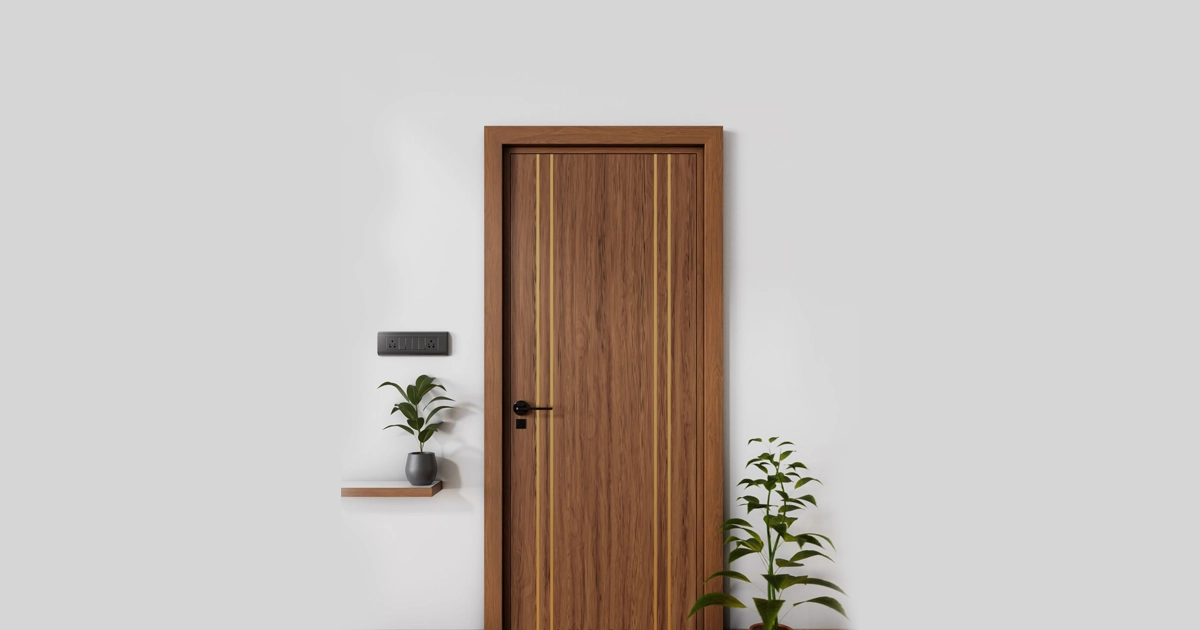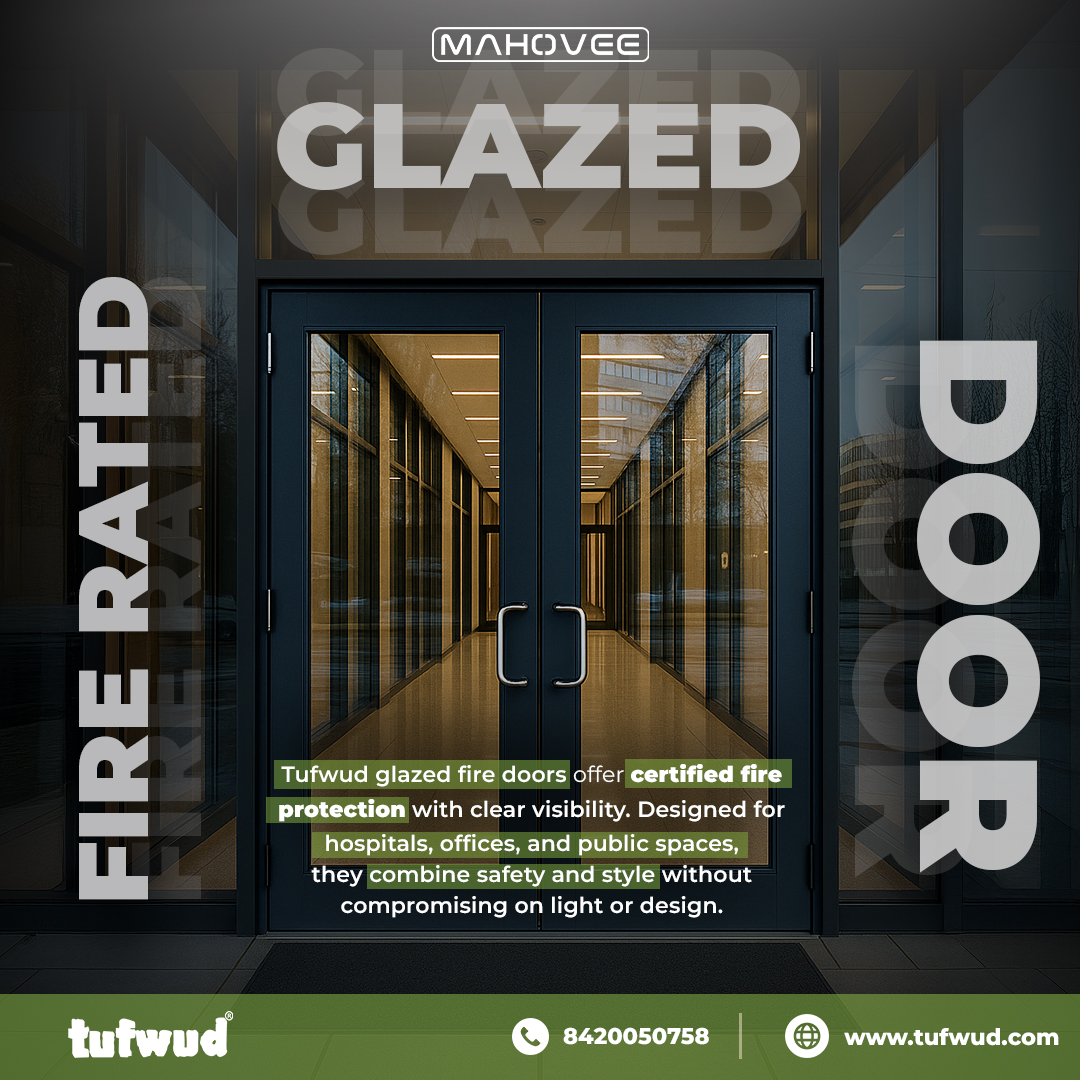“You’ve designed a stunning modern office. Sleek glass partitions, premium flooring, stylish ceilings. The client is impressed — until they close the meeting room door and still hear the printer buzzing, phones ringing, and footsteps in the hallway.“
As an architects and interior designers when you plan a soundproof home, you think beyond just walls and furniture. your imagination for a space where every room feels calm, private, and comfortable.Consider how families can enjoy quiet mornings, focus on work, or relax without being disturbed by traffic, neighbors, or household noise.
For them, a soundproof door is not just a functional element—it’s a key design feature that shapes the experience of living, making every space peaceful and refined.
Key Reasons for choosing Interior Doors for Soundproof Doors
Noise Reduction:
Unwanted outside noise is reduced when using interior doors for soundproofing, which are made with insulating materials and seals to stop sound.
Privacy:
They keep noise contained within a space, making it impossible for anyone to overhear conversations or activities. This is important for homes, workplaces, and hotel rooms.
Productivity and Concentration:
Soundproof doors reduce noise, which can cause stress and anxiety, and help people focus better, particularly in offices.
Improved Sleep and Health:
Better sleep is essential for both physical and mental well-being, and it can be achieved by reducing noise pollution, particularly at night.
Benefits to Health:
Regular exposure to loud noise has been connected to health issues like headaches, stress, and high blood pressure, so soundproofing is an essential part of a healthy home.
Top 5 Interior Door Options Every Architect Should Consider for Soundproofing
Solid Core Wooden Doors with Acoustic Seals
Forget hollow-core doors — they’re like paper walls. Solid-core designs with dense timber or engineered cores drastically reduce decibel transfer. Add precision acoustic seals, and you have a reliable barrier for offices, homes, and schools.
Acoustic Rated Doors for Studios and Theaters
For high-demand environments like home theaters, music rooms, or recording studios, you need professionally engineered acoustic doors. These are tested and certified to specific Sound Transmission Class (STC) ratings, ensuring measurable performance.
Fire-Rated Soundproof Doors
Why choose between safety and silence? Fire-rated acoustic doors offer dual protection — stopping both flames and unwanted sound. Perfect for hospitals, hotels, and industrial projects where regulations demand both.
Acoustic Glass Doors for Modern Interiors
Architects love glass for its openness and light — but standard glass leaks sound. Fire-rated acoustic glass doors solve the problem, offering transparency without compromising privacy.
Custom-Built Acoustic Doors for Unique Projects
Every space is different. That’s why at Tufwud, we manufacture custom soundproof doors tailored to an architect’s design vision — whether it’s luxury apartments, boardrooms, or specialized labs.
What Every Architect Must Keep in Mind When Choosing Soundproof Doors
STC Ratings Matter
Always check certified acoustic test results. A higher STC means better sound blocking.
Installation is Key
Even the best door fails without proper seals and framing.
Balance Design with Function
Soundproof doesn’t mean bulky. Modern options blend performance with aesthetics.
Future-Proofing
Clients will always expect comfort, safety, and privacy — invest in solutions that stand the test of time.
What Type of Interior Door is Best for Soundproofing?
Solid Core Doors
These have substantially superior sound-blocking qualities and are substantially denser than hollow core doors. They are a reasonably priced way to reduce noise and are packed with wood or composite material.
Solid wood doors
Because of their inherent thickness and density, these are the best at soundproofing. They are frequently more costly than solid core alternatives, though.
Hollow-core doors
hollow-core doors offer less sound insulation than solid core doors.These have a honeycomb cardboard structure inside that makes it easy for noise to pass through, making them least effective soundproofing.
How to choose Best Interior Doors for Soundproofing
An interior doors for soundproofing can be made by a hollow-core door with foam insulation, adding bulk using mass loaded vinyl (MLV), or sealing all gaps with weatherstripping and a door sweep. Replace a hollow-core door with a denser, solid-core door or a specialty acoustic door for optimal results.
Put on weatherstripping: To ensure an airtight seal while the door is closed, wrap the door frame with self-adhesive weatherstripping or door gaskets.
Include a door sweep: To stop sound leaks, seal the space between the door and the floor by attaching a sound-blocking door sweep to the bottom of the door.
Use expanding foam or acoustic caulk: To stop sound and air from entering the door or frame, seal any residual cracks or gaps with expanding foam or acoustic caulk.
Install panels that absorb sound: To absorb sound, affix flexible acoustic foam panels to the door’s surface.
Think about acoustic drapes: Over the door, hang thick acoustic curtains to block and absorb noise, particularly voices and other mid-range sounds.
Conclusion
Don’t Let Doors Be the Weak Link in Your Design
As an architect, your reputation is built on delivering both beauty and functionality. While walls, floors, and ceilings often get the attention, doors quietly decide whether your design performs.
By choosing the right interior doors for soundproof, you ensure your projects offer not just visual appeal, but also the privacy, peace, and comfort your clients demand.





